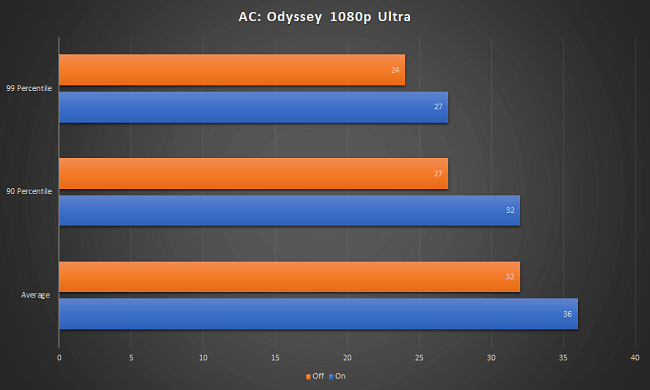Hardware Accelerated GPU Crack Scheduling in Windows
Hardware-accelerated GPU Crack Sscheduling Tool like HashCat 2024
Hardware accelerated GPU Your computer’s processor usually transfers some visually and graphically demanding data to the GPU for rendering, so games, multimedia, and other applications run smoothly. The CPU collects the frame data, assigns commands, and prioritizes them one by one so that the GPU can render the frame. With the hardware-accelerated GPU With the scheduling feature, the scheduling processor and memory VRAM of the GPU take on the same work and run it in batches to render the images.
Overview Hardware Accelerated GPU:
This way, your GPU will relieve the CPU of some work and reduce latency so that your computer can run better. If you have a supported graphics card (more on that below), it’s a good idea to enable GPU scheduling, as it helps improve overall computer performance. You’ll likely notice some performance improvements when running resource-intensive tasks like video editing and gaming.

Scheduling Disabled:
The only reason you should not use this feature is if you experience any problems after enabling it. If your apps suddenly stop working or you have graphics issues after turning it on, it’s best to leave GPU scheduling disabled. Fortunately, turning off the feature after testing it is easy, as we’ll explain. Although this feature debuted with the Windows 10 May 2020 Update,
Graphics Driver:
Your computer must also have an NVIDIA GTX 1000 and later or AMD 5600 series or later graphics card with the latest graphics. Driver. Unfortunately, no specific hardware combination CPU and GPU is yet known to achieve the best performance with this feature. So your mileage may vary with this feature depending on your PC’s CPU, GPU and graphics drivers. Here’s how you can enable it on your Windows 10 and 11 computer. Before you begin, it’s a good idea to update your computer’s graphics drivers.
Hardware Accelerated:
On a Windows 10 PC, you have two ways to enable hardware-accelerated GPU scheduling: through Settings or through Registry Editor. Both achieve the same thing and here are both ways for you. By Ayahs Patel Updated 23 February 2024 Reviewed and updated by Atash Rajas Karan Microsoft Windows is the right choice for gamers because it offers wide hardware support and often gets new gaming-related features.
Graphics Performance:
In addition, the goal of Windows is to let you get the most out of your hardware. In this article, we’ll walk you through using hardware-accelerated GPU scheduling in Windows 11 to improve graphics performance by offloading some CPU-bound tasks to the GPU. Windows introduced hardware-accelerated GPU scheduling with Windows 10 Build 2004. This feature aims to directly hand the workload of high-priority threads, such as rendering frames, to the GPU instead of the CPU.
The goal is to save time and minimize the input latency associated with image buffering. While this frees up the processor from running commands in batches, it also helps make the most of the GPU inside.
Screenshots:


Key properties of hardware-accelerated GPUs:
- This separation of responsibilities improves overall responsiveness and performance.
- It is important to note that hardware-accelerated GPU scheduling requires compatible hardware and drivers.
- The GPU must support Windows Display Driver Model WDDM 2.7 or later.
- In addition, the operating system must also support this feature.
- As of the Windows 10 May 2020 Update, hardware-accelerated GPU scheduling is supported on Windows systems.
- Enabling or disabling hardware-accelerated GPU scheduling can be done through Graphics Settings in the Windows Settings app.
- However, it should be mentioned that not all apps and games can benefit equally from this feature.
- Some apps may not see noticeable improvements or may even have compatibility issues.
- Therefore, it is recommended to test the impact of the feature on specific applications or games before making a final decision.
What’s New:
- Increased overhead: Hardware accelerators may require increased hardware capacity and complex design, which can increase cost, scale, and power consumption.
- Emerging risks: Along with software changes, emerging risks and security vulnerabilities such as hardware bugs, backdoors or sabotage can come into play.
- More complex development: In addition, verification and testing can be more time-consuming, costly and difficult to implement.
- Inconsistent experience: Compatibility or interoperability issues can reduce the usability and functionality of systems. This is particularly problematic for cross-platform applications that use multiple variants and standards of hardware accelerators.
- Unnecessary effort: If your processor is relatively powerful compared to other computer components, hardware acceleration may not be beneficial for certain tasks.
- Higher cooling requirements: If your computer, especially the GPU, is overheating, you may not want to turn on hardware acceleration.
- Software bugs: The software that controls your hardware acceleration options may not work well or be as reliable when interacting with the CPU, resulting in a lackluster user experience.
System Requirements:
- I’ll start with my specs:
- Mobo: MSI H 310 Pro VD
- Ram: Crucial 16 GB, 2×8, 2666 MHz
- CPU: Intel Core i 3-8100
- GPU: Radon RX 5700, ASUS Dual edition
- Storage: Crucial 1 TB MX 500 S S D
- Source: Cooler Master Elite 600 W
- CPU cooler: Thermal take Contact 9 – Air cooler with 1 fan
- Case fans: 3 2 x 120 mm + 1 x 100 mm
How to Use:
- The process of using hardware acceleration will vary from system to system.
- It will also depend on the compatibility of the operating system, hardware driver, processor chip and the application itself.
- Let’s discuss some helpful tips.
Conclusion:
In conclusion, hardware acceleration is essential to optimize resource usage and increase performance in various applications. By offloading processing tasks from the CPU to specialized hardware, it speeds up the execution of complex algorithms and resource-intensive operations. The use cases for hardware acceleration are varied, from AI and digital signal processing to accelerating packet routing decisions and media services.
